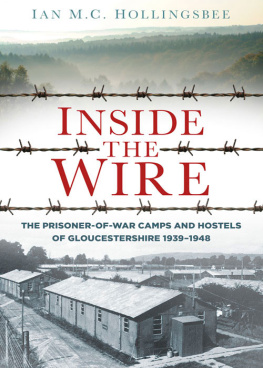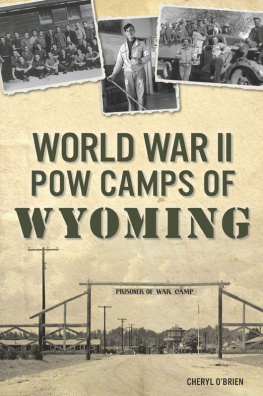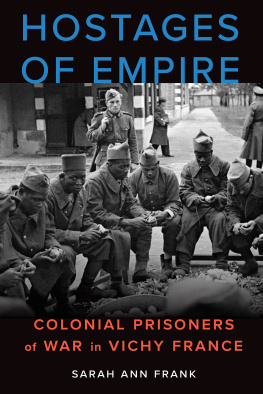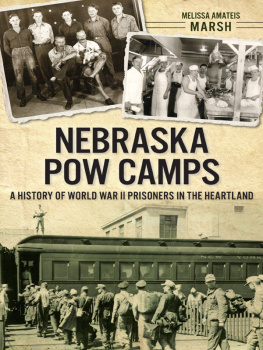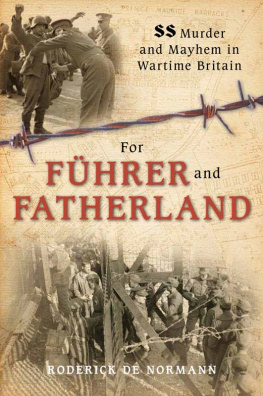MURDER AND MARTIAL JUSTICE
TRUE CRIME HISTORY SERIES
Twilight of Innocence: The Disappearance of Beverly Potts
James Jessen Badal
Tracks to Murder
Jonathan Goodman
Terrorism for Self-Glorification: The Herostratos Syndrome
Albert Borowitz
Ripperology: A Study of the Worlds First Serial Killer and a Literary Phenomenon
Robin Odell
The Good-bye Door: The Incredible True Story of Americas First Female Serial Killer to Die in the Chair
Diana Britt Franklin
Murder on Several Occasions
Jonathan Goodman
The Murder of Mary Bean and Other Stories
Elizabeth A. De Wolfe
Lethal Witness: Sir Bernard Spilsbury, Honorary Pathologist
Andrew Rose
Murder of a Journalist: The True Story of the Death of Donald Ring Mellett
Thomas Crowl
Musical Mysteries: From Mozart to John Lennon
Albert Borowitz
The Adventuress: Murder, Blackmail, and Confidence Games in the Gilded Age
Virginia A. McConnell
Queen Victorias Stalker: The Strange Case of the Boy Jones
Jan Bondeson
Born to Lose: Stanley B. Hoss and the Crime Spree That Gipped a Nation
James G. Hollock
Murder and Martial Justice: Spying and Retribution in World War II America
Meredith Lentz Adams
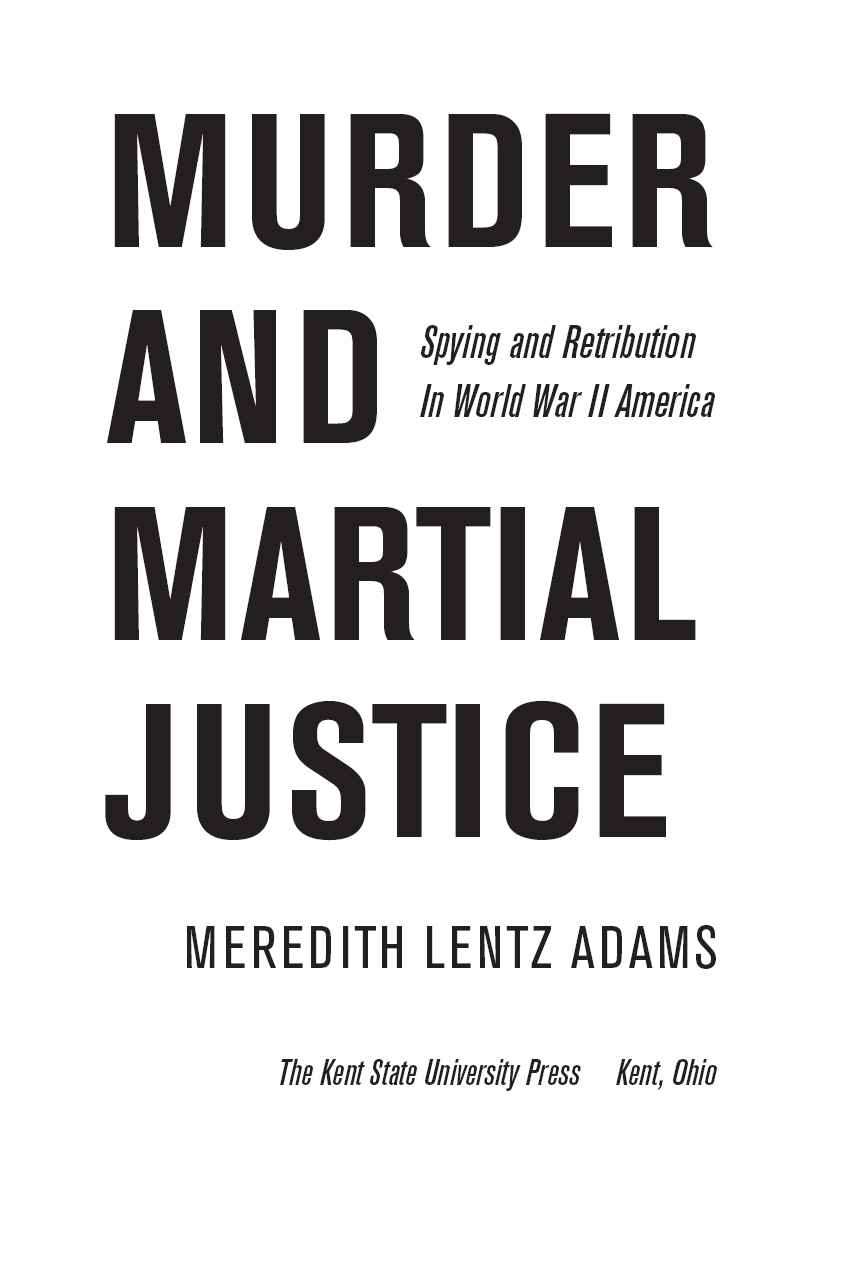
2011 by Meredith Lentz Adams
All rights reserved
Library of Congress Catalog Card Number 2011000670
ISBN 978-1-60635-075-1
Maufactured in the United States of America
Library of Congress Cataloging-in-Publication Data
Adams, Meredith Lentz, 1938
Murder and martial justice : spying and retribution in World War II America / Meredith Lentz Adams.
p. cm. (True crime history series)
Includes bibliographical references and index.
ISBN 978-1-60635-075-1 (hardcover : alk. paper)
1. World War, 19391945Prisoners and prisons, American. 2. Prisoners of warUnited StatesHistory20th century. 3. Prisoners of warGermanyHistory20th century. 4. GermansUnited StatesHistory20th century. 5. SpiesUnited StatesHistory20th century. 6. MurderUnited StatesHistory20th century. 7. RetributionHistory20th century. 8. Prisoners of warAbuse ofUnited StatesHistory20th century. 9. TortureGovernment policyUnited StatesHistory20th century. 10. Executions and executionersUnited StatesHistory20th century. I. Title.
D805.U5A33 2011
940.5487430973dc22
2011000670
British Library Cataloging-in-Publication data are available.
15 14 13 12 11 5 4 3 2 1
Acknowledgments
First I would like to thank the three people who made this book possible: Ken Knox, who brought the subject to my attention and generously shared his documents; Margie von der Heide, department secretary, who arranged for me to have some two-or-three day teaching schedules before I retired; and my colleague and husband David B. Adams, who uttered the magic words, Honey, lets eat out.
Thanks to Matt Mancini, an outstanding chairman of the history department at Southwest Missouri State University (now Missouri State), who gave me unstinting encouragement. I also thank Al Rose, Bill Piston, and Phyllis Shaw for reading all or part of my manuscript, and Lyle Polly and Eleanor Link who checked my French translations for accuracy and elegance.
The archivists at the National Archives gave wonderful help, as did those at the Yale University Library. Special thanks to Pam Morrison and BW&A Books, Inc. in Durham, North Carolina. And my children contributed, eventually, an empty nest. My special thanks to Mariya, for computer help, and to Jessica, who never got to play soccer but gave me grandchildren anyway.
This book is dedicated to my teachers, particularly Miss Sarah Frances Cunningham of Newton Academy School in Asheville, North Carolina; Phyllis Abbott Peacock at Broughton High School in Raleigh (writing teacher extraordinaire); Richard Painter, Vera Largent, Jordan Kurland, Eugene Pfaff, and Richard Bardolf at the Womans College of the University of North Carolina (now UNC-Greensboro); and Oliver H. Radkey and R. John Rath at the University of Texas, Austin.
Abbreviations
| ASF | Army Service Forces |
| AW | Articles of War |
| B-CMR | Beyer Five court-martial (Beyer, Seidel, Demer, Schomer, Scholz) |
| BR | Board Report: Report of Board of Officers Appointed to Inquire into and Determine the Responsibility for the Death of Prisoner of War Werner Drechsler |
| DB/USDB | U.S. Disciplinary Barracks (Fort Leavenworth, Kansas) |
| D-CMR | Werner Drechsler court-martial (Helmuth Fischer, Fritz Franke, Guenther Kuelsen, Heinrich Ludwig, Bernhard Reyak, Otto Stengel, and Rolf Wizuy) |
| DEF | Disarmed Enemy Forces |
| G-1 | U.S. Army Personnel |
| G-2 | U.S. Army Intelligence |
| IRC | International Red Cross |
| JAG/JAGO | Judge Advocate General/Judge Advocate Generals Office |
| JCS | Joint Chiefs of Staff |
| M-CMR | Edgar Menschner court-martial |
| NA, RG | National Archives of the United States, Record Group |
| ONI | Office of Naval Intelligence |
| PMG/PMGO | Provost Marshal General, Provost Marshal Generals Office |
| PWD | Prisoner of War Operations Division, War Department |
| SAC | Special Agent in Charge, FBI SEP Surrendered Enemy Prisoners |
| SP | stool pigeon or special prisoner |
| SWPD | Special War Problems Division, State Department |
Introduction
This book deals with four murder cases during World War II, for which fifteen German war prisoners held in camps on American soil were sentenced to death, and fourteen hanged. It emphasizes one case that best illustrates how the War Department interpreted, observed, and violated the Geneva Convention of 1929. It also deals with the War Departments consequent diplomatic and public relations problems and with its attempts to control the prison camps. At present, the Pentagon defends itself against the charge of abusing war prisoners, but during the war it was charged with mollycoddling them. Whatever abuses occurred in wartime could be kept secret. The four crimes, trials, and executions thus received little or no publicity. The bodies of fourteen Germans lay in complete obscurity among the unclaimed corpses of disgraced American ex-soldiers in a small prison cemetery, about a mile from the Disciplinary Barracks at Fort Leavenworth, Kansas (DB).
How, then, did they come to be remembered? Richard Whittingham discovered the neglected cemetery by chance while he was serving as a news writer for the DBs public information office in the 1960s. Curiosity piqued, he found a small file... kept in a locked cabinet along with other files on subjects about which the army was reluctant to provide information. It would take him more than six years, in those days before the Freedom of Information Act, before his curiosity was satisfied. He published his book, Martial Justice: The Last Mass Execution in the United States, in 1971. Whittingham succeeded in telling a fascinating story based on interviews and archival research. Unfortunately, he provided no footnotes.




